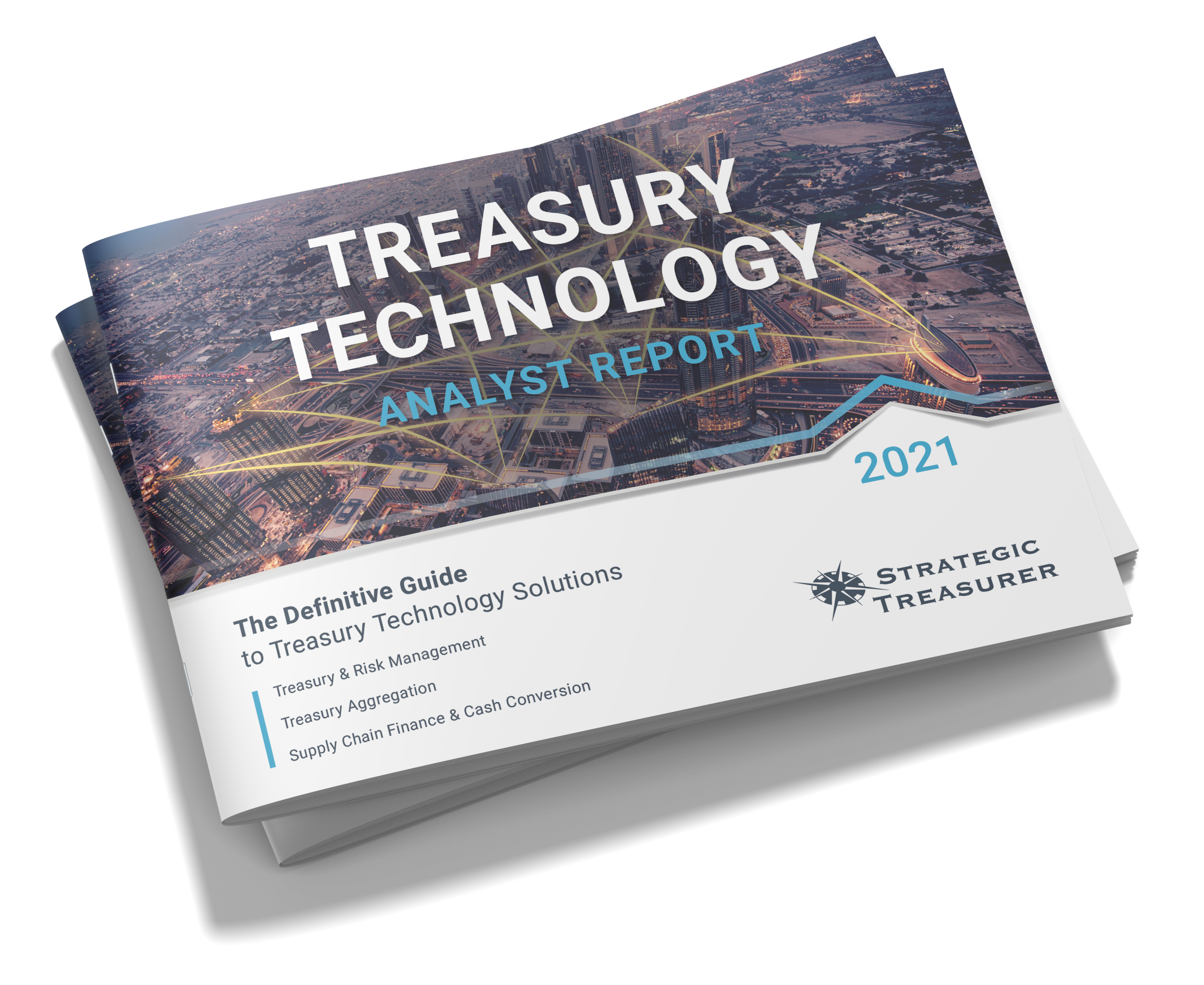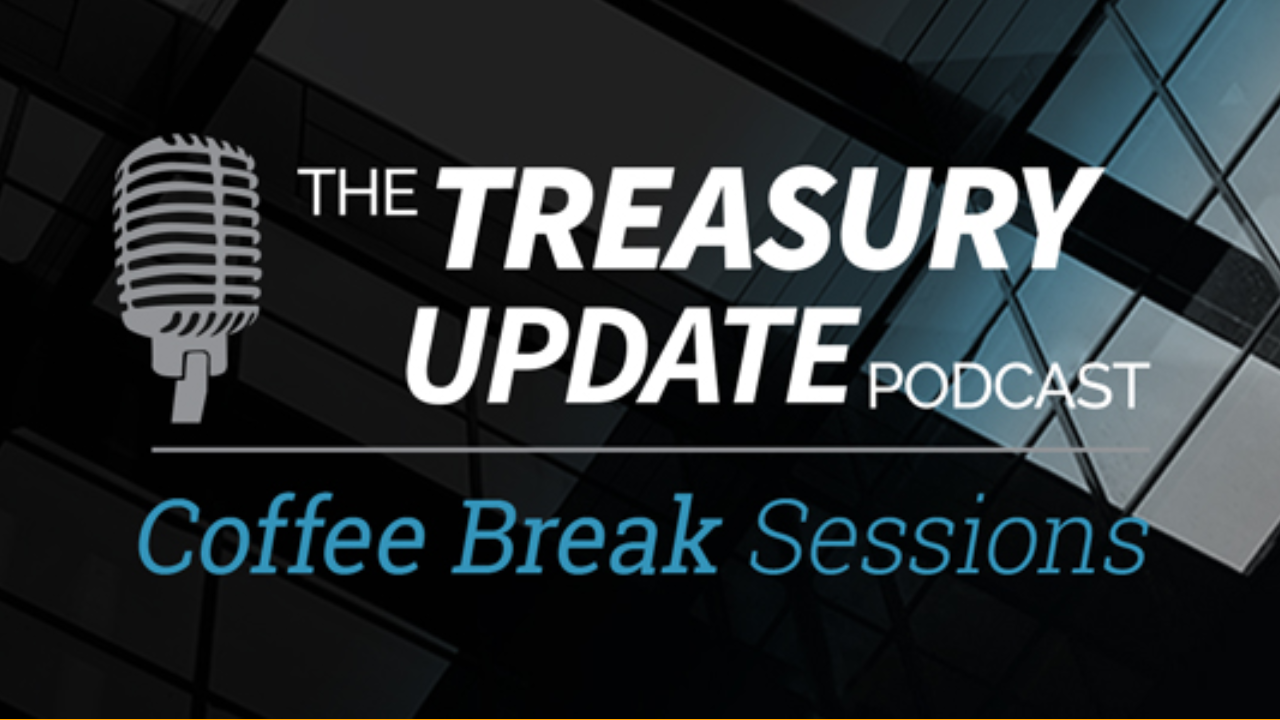
Session 62
Coffee Break Session:
What Is Dynamic Discounting?
What is dynamic discounting? Coffee Break Session Host Alexa Cook catches up with Strategic Treasurer’s Managing Partner, Craig Jeffery, to discuss dynamic discounting. They discuss what dynamic discounting is and how it can be leveraged.
Host:
Alexa Cook, Strategic Treasurer


Speaker:
Craig Jeffery, Strategic Treasurer


Episode Transcription - (Coffee Break Session Series) - Episode 62 - What Is Dynamic Discounting?
Alexa Cook 0:05
Welcome to The Treasury Update Podcast the Coffee Break session, the show where we cover foundational treasury topics and questions in about the same amount of time it takes you to drink your coffee. This is your host Alexa and I’m joined today again with Craig Jeffery, Managing Partner of Strategic Treasurer. Welcome back, Craig.
Craig Jeffery 0:24
Alexa, it’s good to be talking about the broader concept of Supply Chain Finance. These are these are fun Coffee Break sessions.
Alexa Cook 0:31
Yeah, it’s all of our listeners. Like we said on our last episode, Supply Chain Financing. We did say we would start to do a deeper dive into some of the pieces of that. So, today we’re going to be covering dynamic discounting. So, Craig what is dynamic discounting?
Craig Jeffery 0:45
Dynamic discounting is a, I’ll call it a payables centric approach or a buyer’s led approach for making use of capital in your organization. This is a buyer who might have quite a bit of capital, they need to put that capital to use, and it may not be returned to their shareholders or there might not be other corporate needs for that. And so how can they earn a good return on the cash rather than sitting idly or earning a few basis points or maybe 100 basis points in the investment side, they may be able to provide that to support their suppliers, but they don’t want to give it up for nothing they want to pay early. And so it’s a way of saying instead of, I’m going to pay early, I’m going to pay on time, but there’s a way of making it so that I can pay early. I make it available for my supplier who has a receivable from me that they could take the money maybe as early as five days or maybe the terms are normally pay within 45 or 75 days, something like that. The receivables group, but the Treasury group either side could collect their money sooner and a sliding scale discount so if I collected five days it’s priced steeply discounted as it moves out to let’s say the 45-day terms I collect the full amount, but on any given day, when I’m ready, I can take that money and take advantage of it. As the person paying, I have extra funds, and I’m willing to put those to use through my payables and help my suppliers in that way. So, both of us win and creates greater flexibility different from the receivable group offering to 10. Net 30 or net 45. For example, let’s say I’m ready in 10 days, I’m not going to pay 35 days early because there’s no discount. So, I’m just going to hold it on but now I make it so that all of my suppliers whether they offer terms or not can collect funds at any time they need it because I’m financial flexibility.
Alexa Cook 2:54
And I feel like you’ve already kind of at least alluded to or started answering the next question and that is what’s really the purpose of dynamic discounting from either the seller or receivables perspective.
Craig Jeffery 3:06
Yeah, oh, I did. I did sort of answer some of that with the seller on the seller side it’s I have extra cash; I can put it to good use for a good return without additional risk. So, I you know, if I can get a good return, I owe those suppliers, so I’m not facing any risk of insolvency or any other issue. So, I can make a good return on my money on the receiver side, it’s an option. I don’t have to use it I can collect when the funds are due. I’m usually taking advantage of some technology to load it into my system or streamline what’s going on, but it also gives me financial flexibility. I don’t just have to wait till 45 days if I need to get a little more cash in earlier or that’s more desirable for whatever purpose cash flow, cycles, etc. Now, I have in this case, 40 days when I can pull those funds and so it’s extra flexibility. So, that tends to be quite a win-win for both the seller and the receivers’ perspective as the seller in the buyers’ perspective.
Alexa Cook 4:08
Okay, great. So, then just to do a quick recap on this really dynamic discounting was described as a payable centric approach, or buyer led approach to make use of capital in your organization. And then I really liked how on my second question, you said, on the seller side, it’s the perspective of, “Hey, I have extra cash, I can put it for use for some extra return without any of that extra risk”.
Craig Jeffery 4:29
But I hope I didn’t say buyer seller and reverse this in our discussion. But the clear the clear thing is if I am available to pay earlier or on time, and I make it available to my partners that strengthens my overall supply chain relationships and so those are good things. There’s a financial benefit. And then there’s an overall network effect of my ecosystem, my trading partners.
Alexa Cook 4:55
Well, thanks, Craig, for joining me today and thanks to all of our listeners for tuning in and make sure you tune in every first and third Thursday of the month for a new episode. And as always, we love hearing from you guys if you have any topics, comments, questions or just want to reach out and send us an email at podcast at strategic treasure.com Thanks again Craig.
OUTRO 5:18
This podcast is provided for informational purposes only, and statements made by Strategic Treasurer LLC on this podcast, are not intended as legal, business, consulting, or tax advice. For more information, visit and bookmark strategictreasurer.com.
- Treasury & Risk Management Systems
- Treasury Aggregators
- Supply Chain Finance & Cash Conversion Cycle




